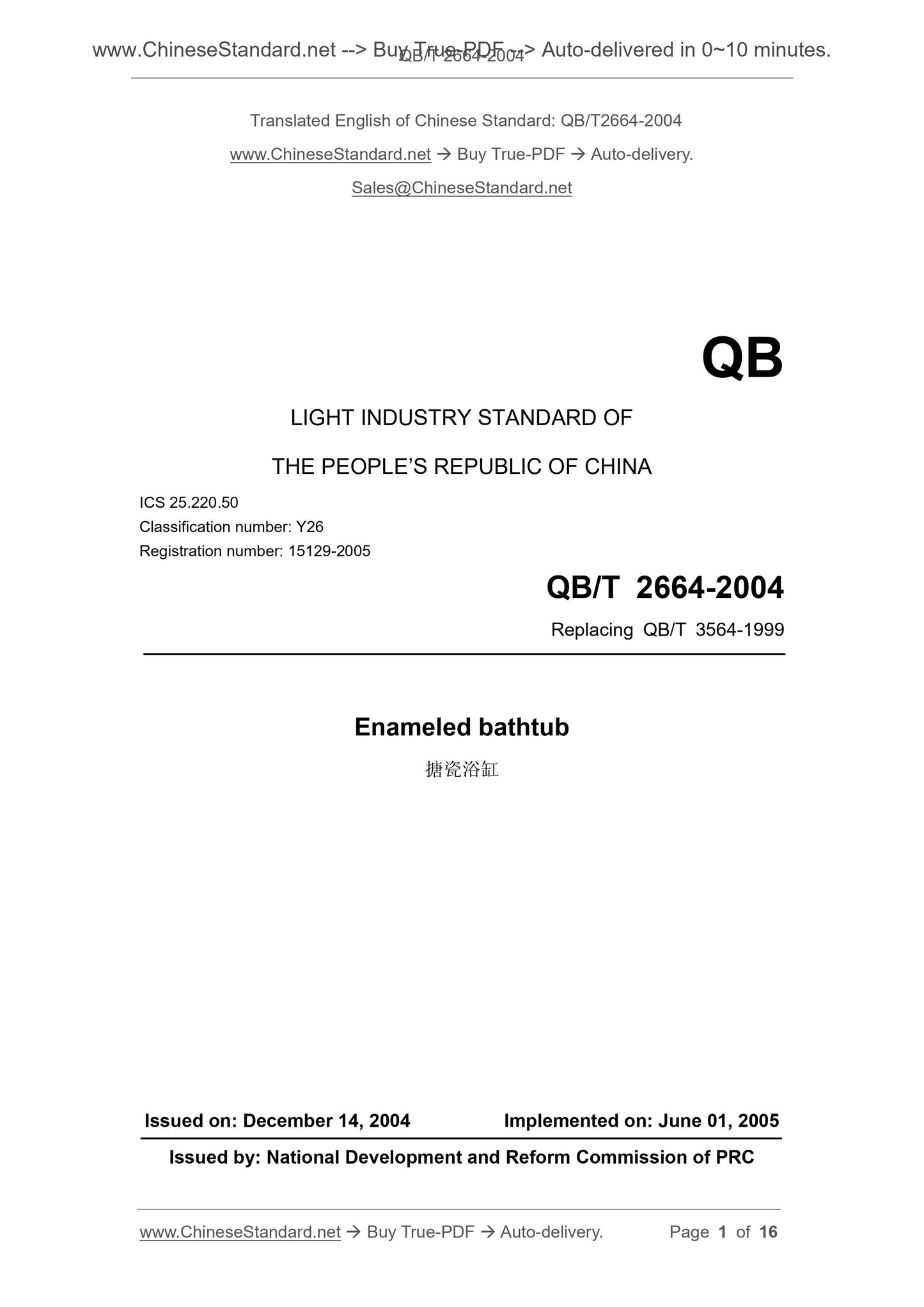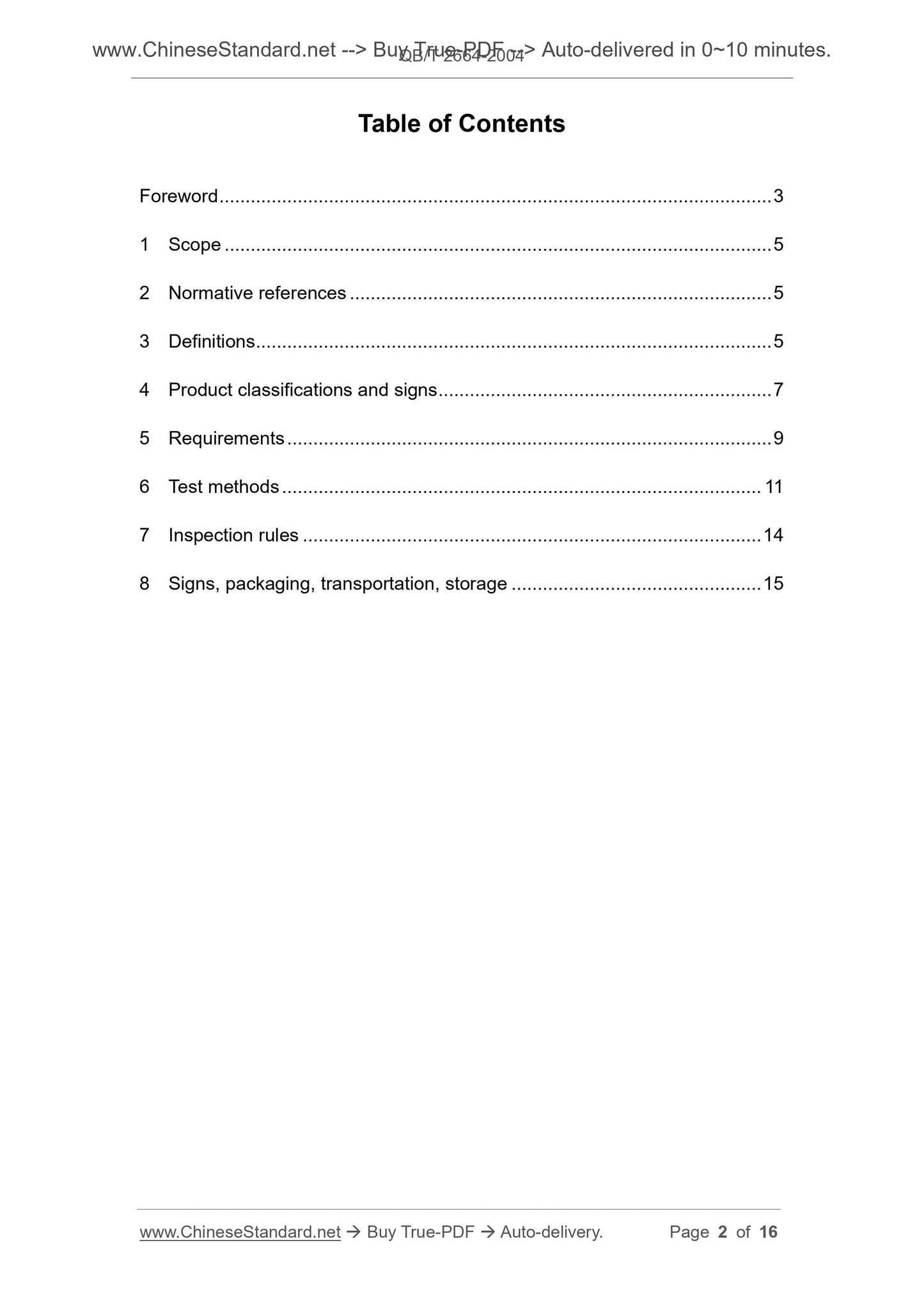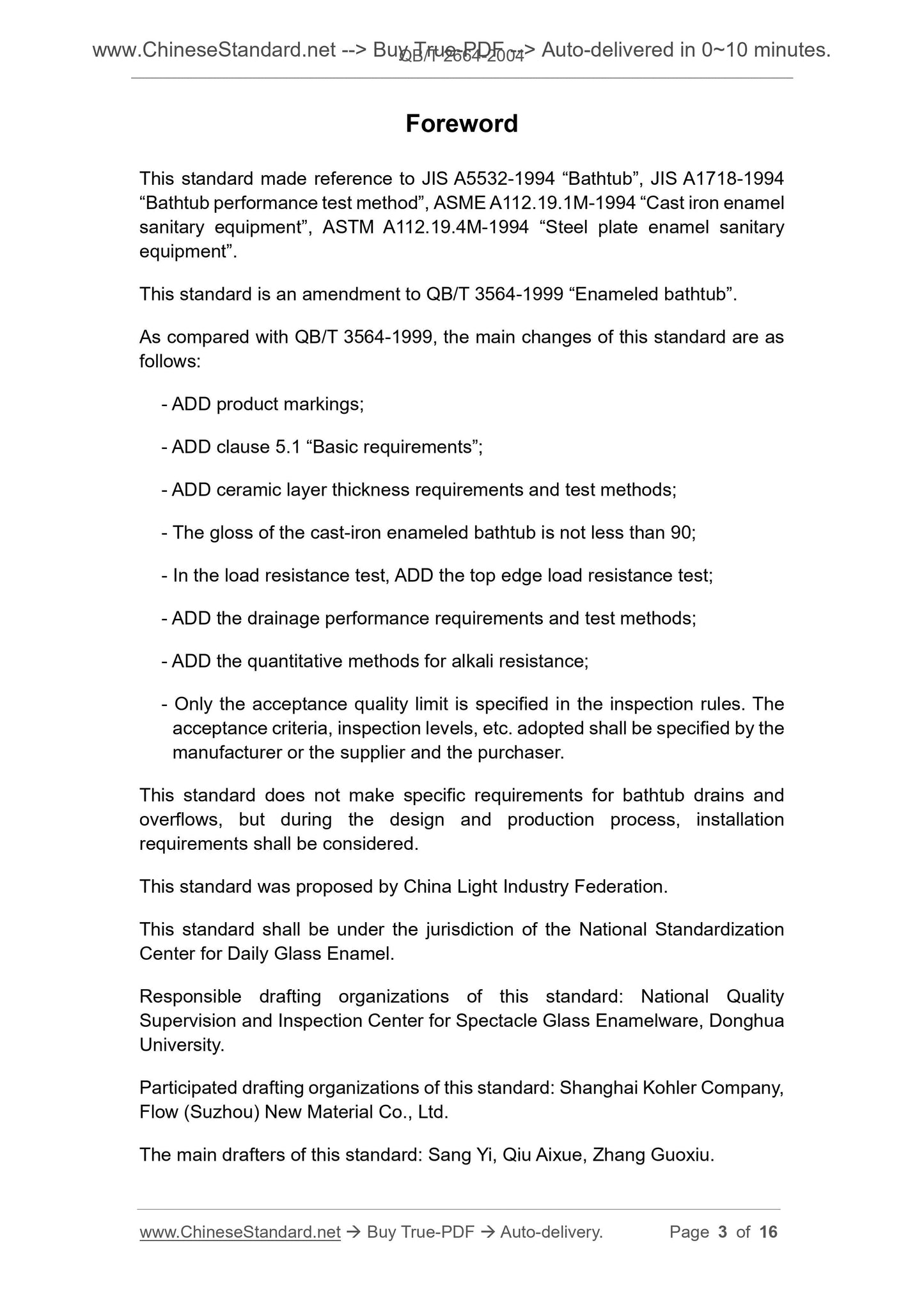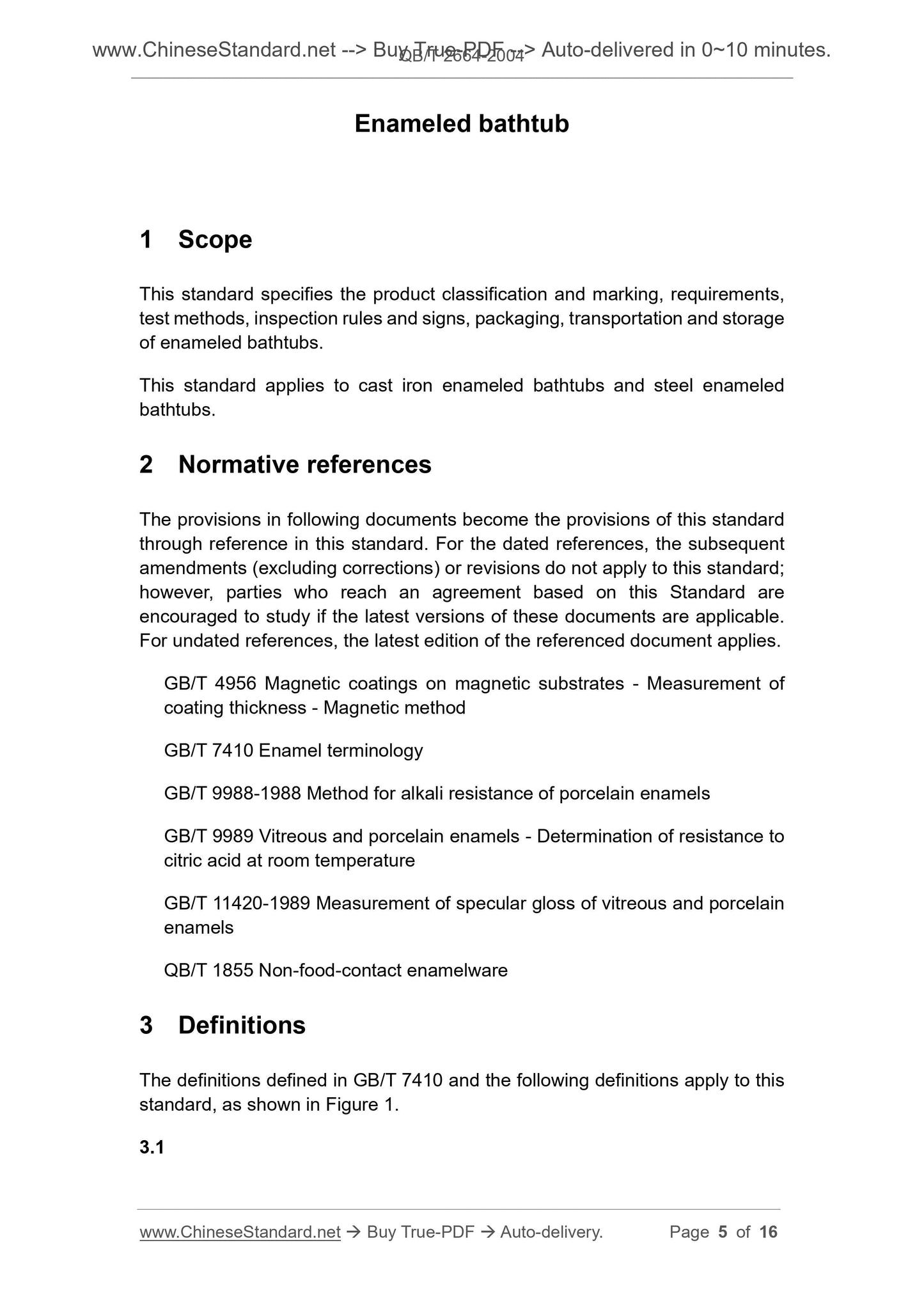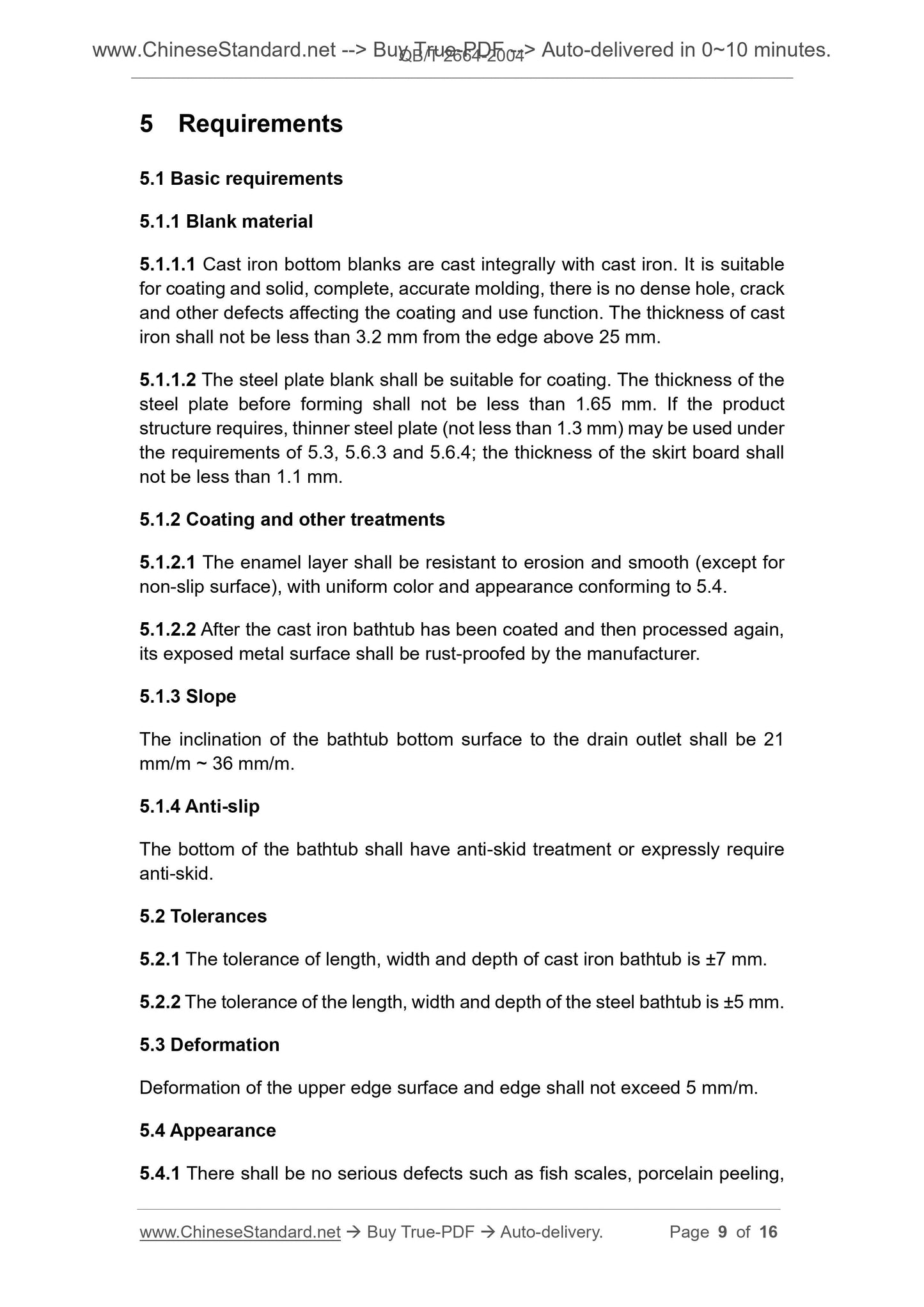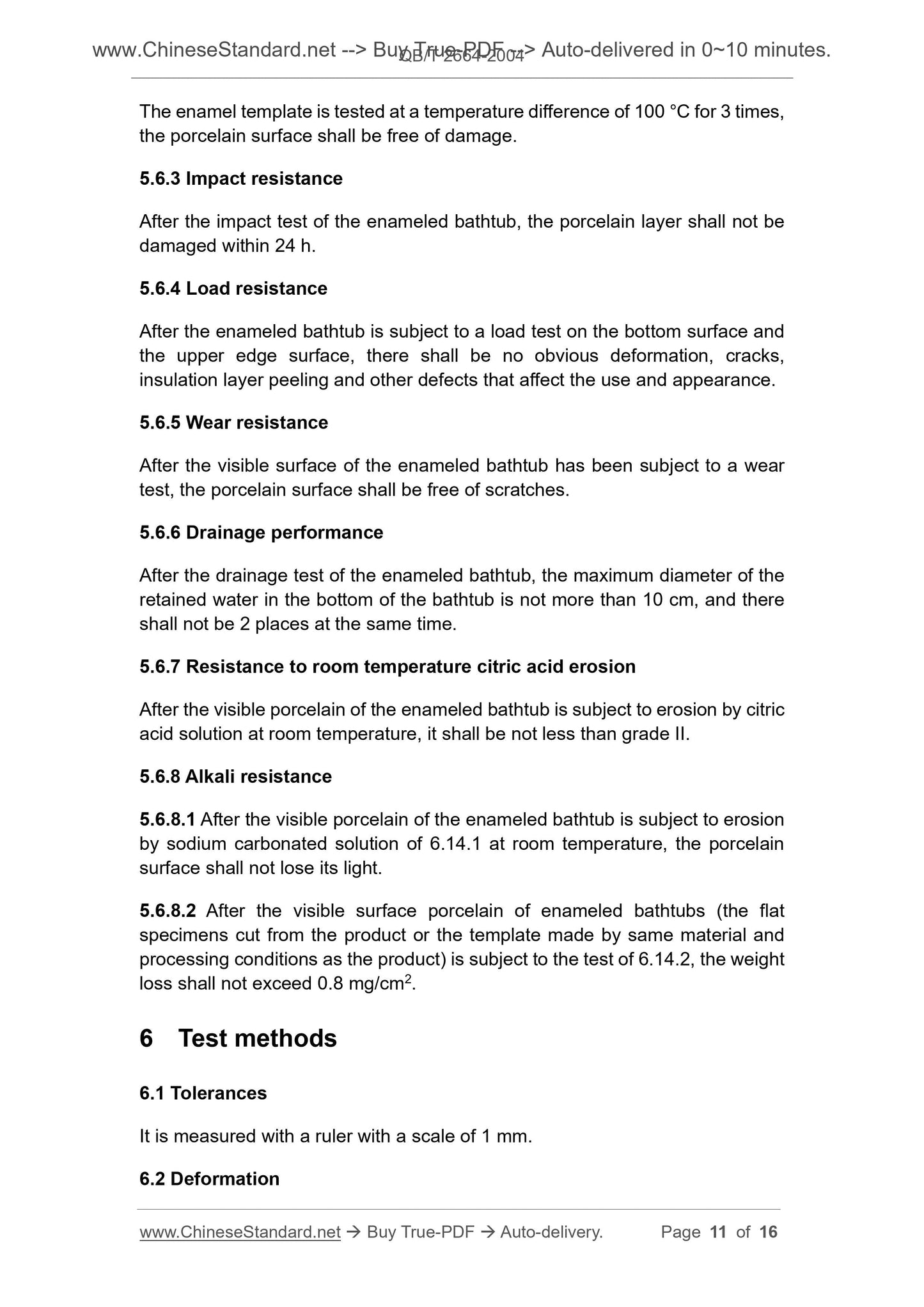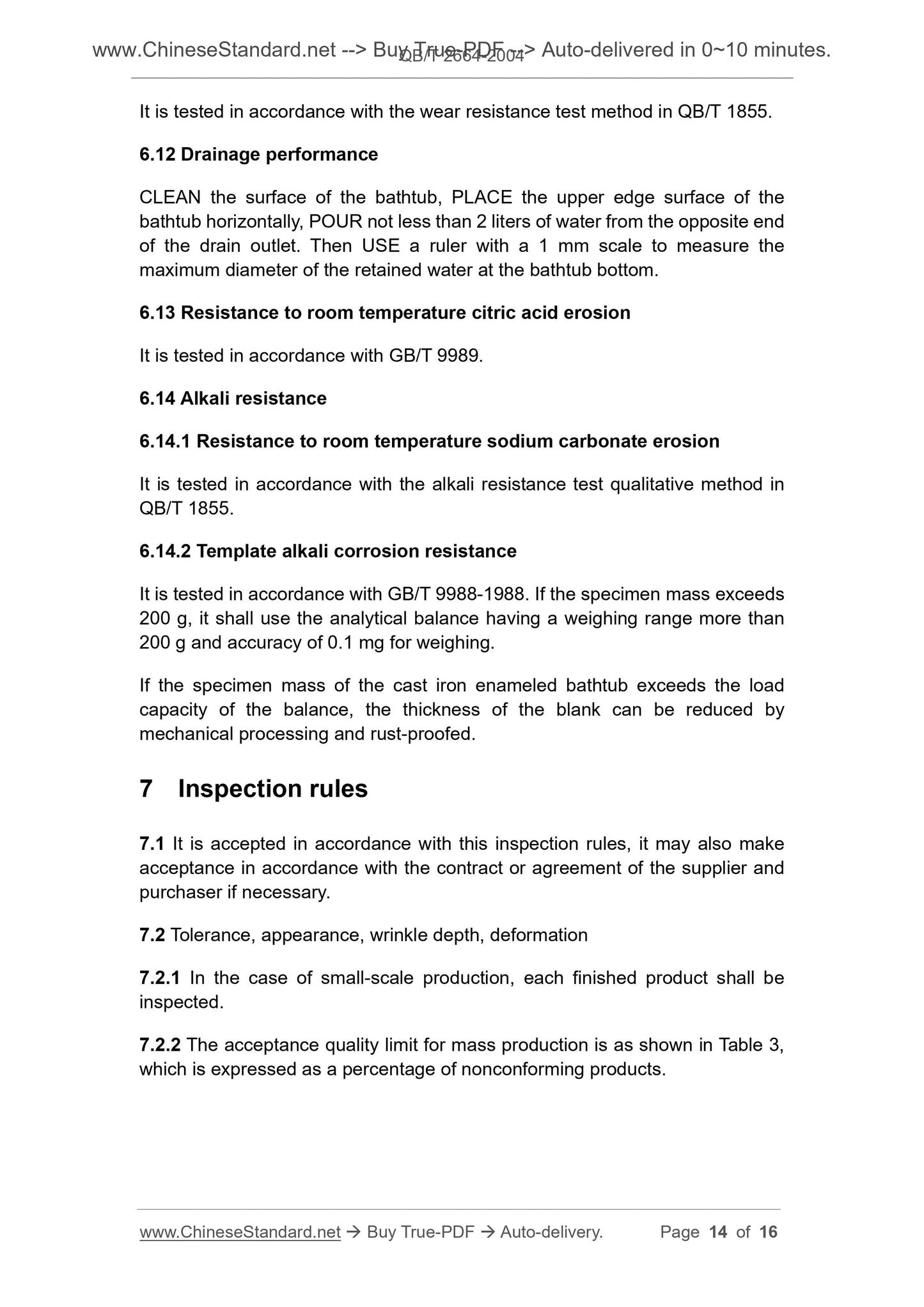1
/
of
7
www.ChineseStandard.us -- Field Test Asia Pte. Ltd.
QB/T 2664-2004 English PDF (QB/T2664-2004)
QB/T 2664-2004 English PDF (QB/T2664-2004)
Regular price
$115.00
Regular price
Sale price
$115.00
Unit price
/
per
Shipping calculated at checkout.
Couldn't load pickup availability
QB/T 2664-2004: Enameled bathtub
Delivery: 9 seconds. Download (and Email) true-PDF + Invoice.Get Quotation: Click QB/T 2664-2004 (Self-service in 1-minute)
Newer / historical versions: QB/T 2664-2004
Preview True-PDF
Scope
This standard specifies the product classification and marking, requirements,test methods, inspection rules and signs, packaging, transportation and storage
of enameled bathtubs.
This standard applies to cast iron enameled bathtubs and steel enameled
bathtubs.
Basic Data
| Standard ID | QB/T 2664-2004 (QB/T2664-2004) |
| Description (Translated English) | Enameled bathtub |
| Sector / Industry | Light Industry Standard (Recommended) |
| Classification of Chinese Standard | Y26 |
| Classification of International Standard | 25.220.50 |
| Word Count Estimation | 10,133 |
| Date of Issue | 2004-12-14 |
| Date of Implementation | 2005-06-01 |
| Older Standard (superseded by this standard) | QB/T 3564-1999 |
| Quoted Standard | GB/T 4956; GB/T 7410; GB/T 9988-1988; GB/T 9989 |
| Adopted Standard | JIS A5532-1994; NEQ; JIS A1718-1994; NEQ; ASME A112.19.1M-1994; NEQ; ASME A112.19.4M-1994; NEQ |
| Regulation (derived from) | Development and Reform Bulletin (04/75) |
| Summary | This standard specifies: enamel bathtub Product classification and marking, requirements, test rules and signs, packaging, transportation and storage, This standard applies to: cast iron bathtub and steel enamel bathtub. |
Share
